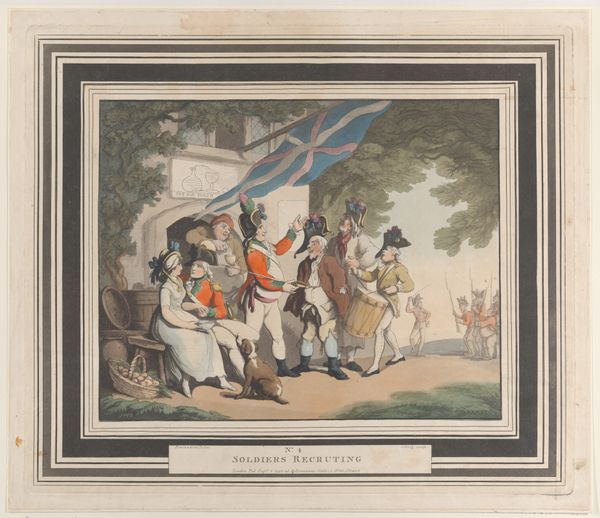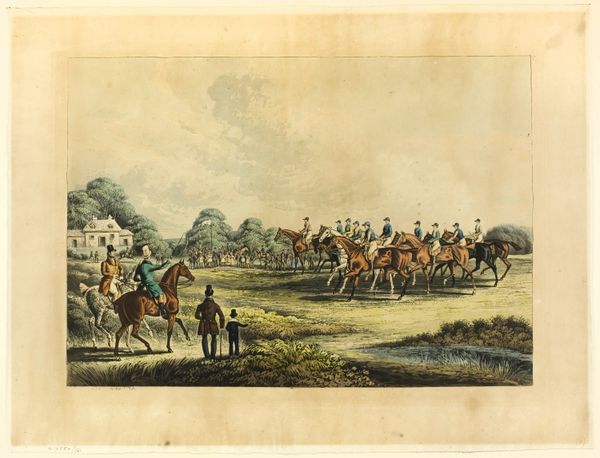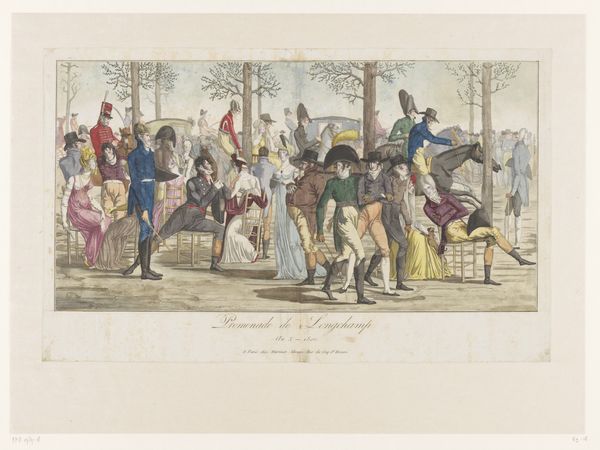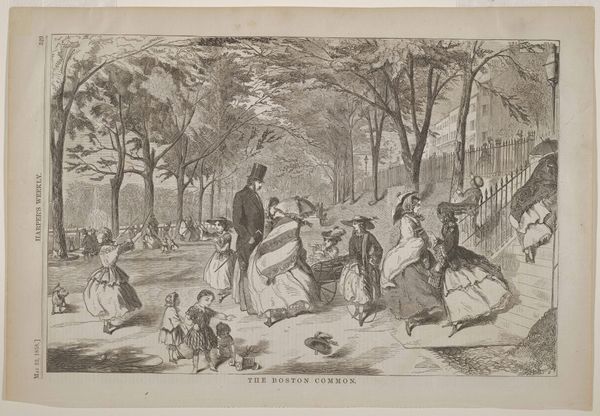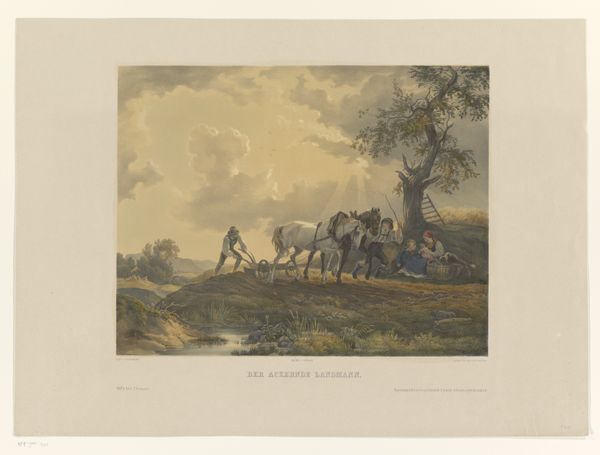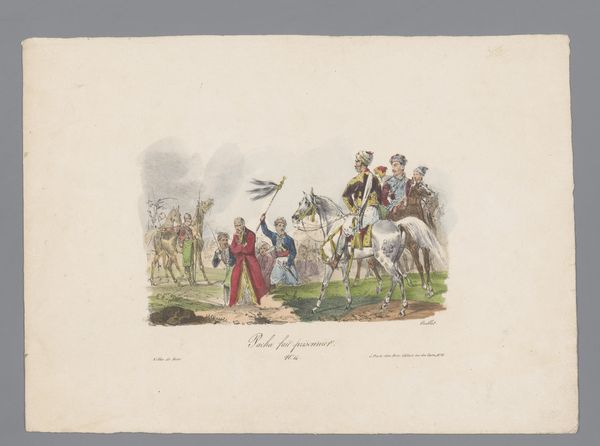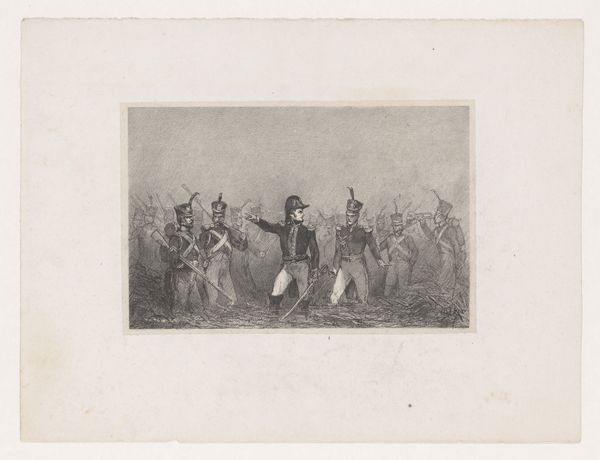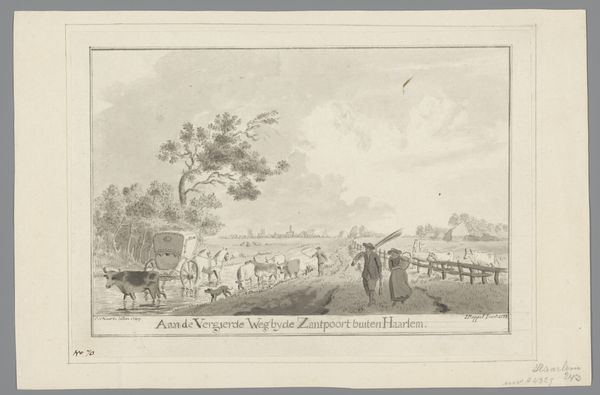
drawing, coloured-pencil
#
drawing
#
coloured-pencil
#
landscape
#
coloured pencil
#
romanticism
#
history-painting
#
miniature
#
watercolor
Copyright: Public Domain
Curator: This intriguing artwork, entitled "Turkish Horseback Ambush," comes to us from Carl Rottmann, likely created between 1810 and 1813. Rottmann used colored pencils for this miniature landscape with historical narrative elements. Editor: There's a strange tension between the miniature scale and the violent scene depicted. The bright colors almost belie the implied brutality of the ambush. Curator: Indeed, the use of color adds a layer of complexity. We often see such scenes rendered with darker, more somber tones. Rottmann, influenced by Romanticism, seems to emphasize the spectacle of conflict rather than its inherent horror. It presents a highly aestheticized image of war. Editor: Semiotically, the figures on horseback represent power and domination. Their elevated position physically mirrors their social hierarchy, and it underscores a stark power dynamic in play, even at first glance. Curator: Absolutely, the horse and rider have long been potent symbols of authority and control, and they carry a significant cultural memory. Notice, too, the contrast between the uniformed soldiers, embodying order, and their seemingly disorganized opponents. That tension, or perhaps, the illusion of a tension, seems key to unlocking this tableau's cultural significance. The viewer can't avoid aligning with one side or the other. Editor: I also wonder about Rottmann's strategic compositional arrangement—how the trees act almost like framing devices, simultaneously concealing and revealing elements of the conflict. And how that sense of enclosure amplifies the surprise of the ambush. Curator: It’s a brilliant theatrical rendering. The backdrop blurs, adding to that almost dream-like atmosphere that encapsulates violence into the picture-postcard aesthetic we find throughout early nineteenth-century history painting. I find myself asking whether Rottmann here presents something heroic or subtly critiques the idealization of warfare. Editor: An ambiguity central to the viewing experience and precisely why this remains a provocative image. Curator: Yes, a perfect meeting of the material and the symbolic. Editor: A perfect meeting of minds as well, I'd venture to say.
Comments
No comments
Be the first to comment and join the conversation on the ultimate creative platform.


